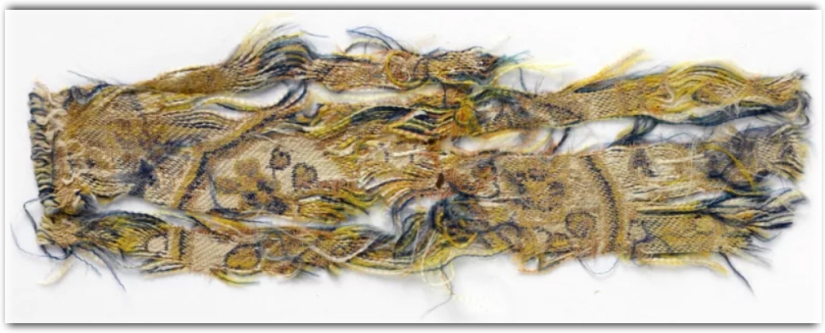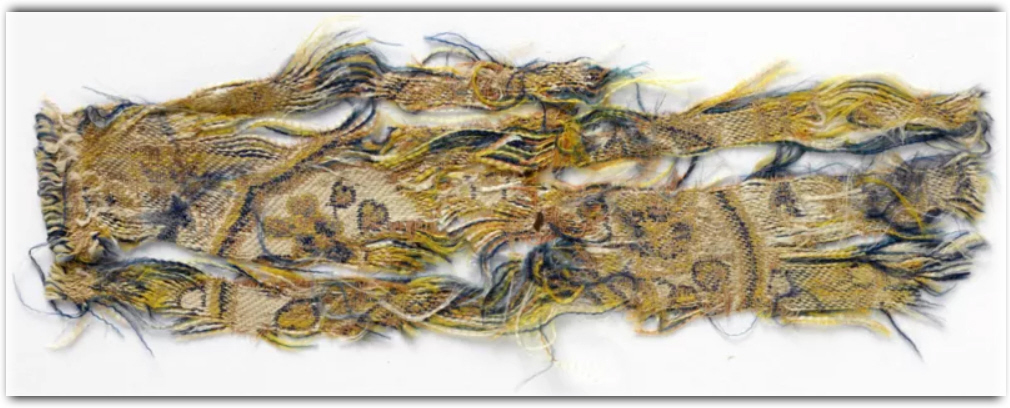The Silk Road was an ancient network of trade routes that connected the East and West. It was central to cultural interaction between them for centuries.
Because silk was the major trade product carried on the road, it was named in 1877 by Ferdinand von Richthoven , a well know German geographer as the Great Silk Road. There is 19th Century Romance in the name. This ancient road not only exchanges goods, but also exchanged the splendid cultures of China, India, Persia and Arabia with each other and the west all the way back to the times of Rome.
The Silk Road derives its name from the lucrative trade in silk carried out along its length, beginning in the Han dynasty (207 BCE–220 CE). The Han dynasty expanded the Central Asian section of the trade routes around 114 BCE through the missions and explorations of the Chinese imperial envoy Zhang Qian. The Chinese took great interest in the safety of their trade products and extended the Great Wall of China to ensure the protection of the trade route.
Trade on the Silk Road played a significant role in the development of the civilizations of China, Korea, Japan, the Indian subcontinent, Iran/Persia, Europe, the Horn of Africa and Arabia, opening long-distance political and economic relations between the civilizations. Though silk was the major trade item exported from China, many other goods were traded, as well as religions, syncretic philosophies, and technologies. Diseases, most notably plague, also spread along the Silk Road. In addition to economic trade, the Silk Road was a route for cultural trade among the civilizations

Another myth about the Silk Road is that people mostly sold silk on it. Certainly silk was a major commodity, but mostly it was used as money. We know that people from soldiers to local rulers were paid in bolts of silk, and traders found it much easier to carry these rolls of soft fabric than the extremely heavy coins in use at the time. Other commodities popular on the Silk Road were also, not surprisingly, lightweight: gems, spices, musk, manuscripts, minerals, glass, medicines, and various textiles.
Perhaps the most valuable items that traveled the silk route were living beings. The Chinese placed a high value on the strong, healthy horses reared by the nomadic groups that ruled the northern steppes.
Slaves were also bought and sold along the routes. One of the few surviving documents we have in Sogdian (see my Sogdian blog post) is a marriage contract from the early 700s, which contains a special rider freeing the husband and wife of their obligations to one another if either party should be enslaved. This was a time when slavery was an ordinary part of everyday life. Ever-present conflicts over trade routes and territory could topple fortunes overnight, turning wealthy aristocrats into chattel.
Ultimately, the Silk Road changed the world not by bringing silk to the west, or glass to the east — instead, it brought immigrants to and from all parts of the world. And with them came new ideas, new scientific discoveries, and new political alliances between far-flung groups. By far the most common use for the Silk Road was immigration, whether that was done by people wanting to set up trade outposts or flee from invaders.
The Sogdians, whose fortunes were rooted in the vast, crazy market city of Samarkand, were also the Silk Road’s greatest immigrant community before the Muslim Conquest of Central Asia (See my blog post)
Northern Route
The northern route started at Chang’an (now called Xi’an), an ancient capital of China that was moved further east during the Later Han Dynasty to Luoyang. The route was defined around the 1st century BCE when Han Wudi put an end to harassment by nomadic tribes.
The northern route traveled northwest through the Chinese province of Gansu from Shaanxi Province and split into three further routes,
- two of them following the mountain ranges to the north and south of the Taklamakan Desert to rejoin at Kashgar,
- and the other going north of the Tian Shan Mountains through Turpan, Talgar, and Almaty (in what is now southeast Kazakhstan). ‘
The routes split again west of Kashgar,
- The southern branch heading down the Alay Valley towards Termez (in modern Uzbekistan) and Balkh (Afghanistan),
- while the other traveled through Kokand in the Fergana Valley (in present-day eastern Uzbekistan) and then west across the Karakum Desert.
Both routes joined the main southern route before reaching ancient Merv, Turkmenistan. Another branch of the northern route turned northwest past the Aral Sea and north of the Caspian Sea, then and on to the Black Sea.
A route for caravans, the northern Silk Road brought to China many goods such as “dates, saffron powder and pistachio nuts from Persia; frankincense, aloes and myrrh from Somalia; sandalwood from India; glass bottles from Egypt, and other expensive and desirable goods from other parts of the world.”In exchange, the caravans sent back bolts of silk brocade, lacquer-ware, and porcelain
Southern Route
The southern route or Karakoram Route was mainly a single route from China through the Karakoram Mountains, where it persists in modern times as the Karakoram Highway, a paved road that connects Pakistan and China.
It then set off westwards, but with southward spurs so travelers could complete the journey by sea from various points. Crossing the high mountains, it passed through northern Pakistan, over the Hindu Kush mountains, and into Afghanistan, rejoining the northern route near Merv, Turkmenistan.
From Merv, it followed a nearly straight line west through mountainous northern Iran, Mesopotamia, and the northern tip of the Syrian Desert to the Levant, where Mediterranean trading ships plied regular routes to Italy, while land routes went either north through Anatolia or south to North Africa.
Another branch road traveled from Herat through Susa to Charax Spasinu at the head of the Persian Gulf and across to Petra and on to Alexandria and other eastern Mediterranean ports from where ships carried the cargoes to Rome.
World Heritage Sites
The Silk Road’s Chang’an-Tianshan Corridor, which was approved by the World Heritage Committee in June 2014 as Site No. 1442, consists of 33 newly designated sites in China, Kazakhstan and Kyrgyzstan. The sites include capital cities and palace complexes of various empires and kingdoms, trading settlements, Buddhist cave temples, ancient paths, posthouses, mountain passes, beacon towers, sections of the Great Wall, fortifications, tombs and religious buildings. Collectively, the 33 sites cover an area of 42,668.16 ha (164.7 sq mi) and have buffer zone 189,963.13 ha (733.5 sq mi).
The sites are categorized into four regions along the Silk Road by ICOMOs, which assessed eligibility for the World Heritage inscription:
1. Central China – ancient imperial capitals in the Central and Guanzhong Plains of China.
- Luoyang City of the Eastern Han to Northern Wei Dynasty, Luoyang, Henan Province
- Dingding Gate, Luoyang City of the Sui and Tang Dynasty, Luoyang, Henan Province
- Longmen Grottoes (a preexisting World Heritage Site), Luoyang, Henan Province
- Hangu Pass, Xin’an, Henan Province
- Shihao section of Xiaohan Route, Sanmenxia City, Henan Province
- Weiyang Palace, Xi’an, Shaanxi Province
- Daming Palace, Xi’an, Shaanxi Province
- Giant Wild Goose Pagoda, Xi’an, Shaanxi Province
- Small Wild Goose Pagoda, Xi’an, Shaanxi Province
- Xingjiao Temple, Xi’an, Shaanxi Province
- Bin County Cave Temple, Bin County, Shaanxi Province
- Tomb of Zhang Qian, Chenggu County, Shaanxi Province
- Maijishan Cave Temple Complex, Tianshui, Gansu Province
2. Hexi Corridor in Gansu Province, connecting China Proper and Xinjiang.
- Bingling Temple Grottoes, Yongjing County, Linxia Hui Autonomous Prefecture, Gansu Province
- Yumen Pass, Dunhuang, Gansu Province
- Xuanquanzhi Posthouse, Dunhuang, Gansu Province
- Mogao Caves (already inscribed on the World Heritage List), Dunhuang, Gansu Province
- Suoyang City Ruins, Anxi, Gansu Province
3. North and South of Tianshan Mountains in Xinjiang, China
- Qocho (Gaochang) City Ruins, Turpan
- Jiaohe Ruins, Turpan
- Beshbalik (Beiting) City Ruins, Jimsar County
- Kizil Gaha Beacon Tower, Kuqa (Kucha)
- Kizil Caves, Kuqa
- Subash Buddhist Temple Ruins, Kuqa
4. Zhetysu Region of the Ili and Talas Valleys of Kazakhstan and the Chuy Valley of Kyrgyzstan
- Site of Kayalyk, Almaty Province, Kazakhstan
- Karamergen, Almaty Province, Kazakhstan
- Talgar, Almaty Province, Kazakhstan
- Aktobe, Jambyl Province, Kazakhstan
- Kulan, Jambyl Province, Kazakhstan
- Akyrtas, Jambyl Province, Kazakhstan
- Ornek, Jambyl Province, Kazakhstan
- Kostobe, Jambyl Province, Kazakhstan
- Suyab (Site of Ak-Beshim), Chuy Province, Kyrgyzstan
- City of Balasagun (Site of Burana),Chuy Province, Kyrgyzstan
- City of Nevaket (Site of Krasnaya Rechka), Chuy Province, Kyrgyzstan
- Osh
- Jalal-Abad
5. Uzbekistan (note that Uzbekistan is west of the Chang’an-Tianshan Corridor World Heritage Corridor)


3 thoughts on “Silk Road”